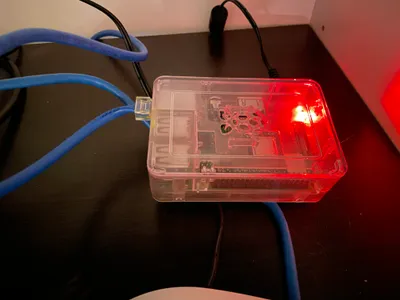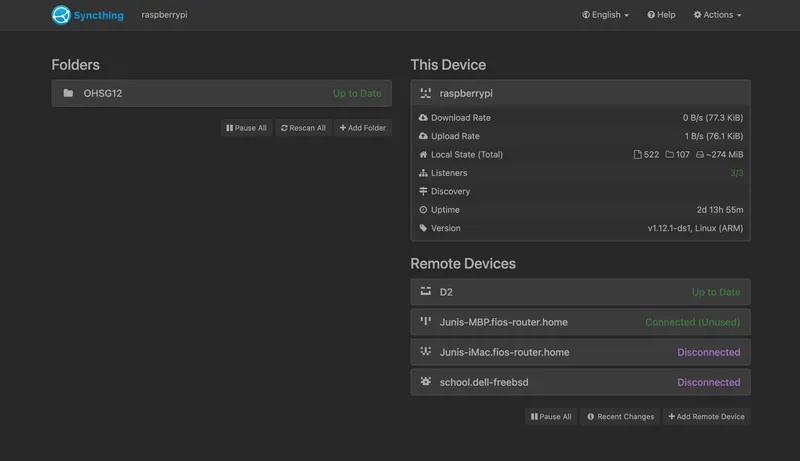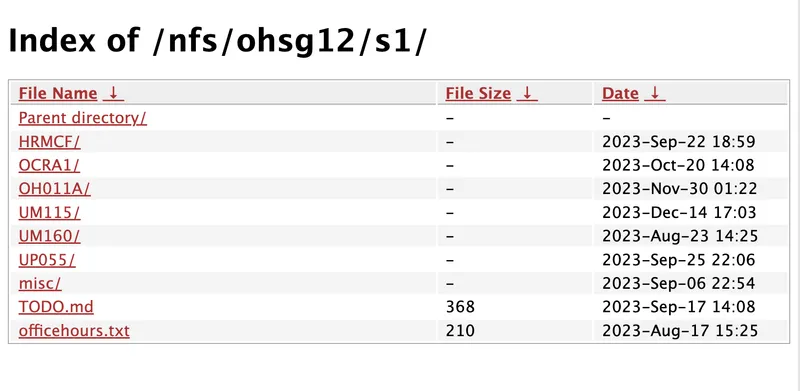School Setup
Plain Text
In my freshman year, after suffering through much impostor syndrome, I finally discovered the power of markup languages with the help of the Open Source cult.
These days, I use markdown (pandoc my beloved) for notes and essays and LaTeX for anything more complicated. For LaTeX work, I use a class that I hacked together. To build and generate projects for each assignment, I use TeXbld.
Servers
Due to the peculiarities of my workflow, I hacked together a custom synchronization and backup system. The future of this setup given my looming move to Cambridge is yet to be decided.
The main storage system involves three servers following the 3-2-1 backup rule. In my house is a Raspberry Pi (which I won from a programming competition) and a 14-year-old Dell workstation that I revived with FreeBSD. Outside my house, I have a VPS instance from DigitalOcean.


School servers in the house; the Raspberry Pi and the Dell Inspiron respectively.


Syncthing Dashboard and Fancyindex browsing respectively, all on the Raspberry Pi
All three servers sync my schoolwork with each other through syncthing and
create backups every 6 hours with cron and a script that looks something like
below:
#!/bin/sh
cd /srv/nfs
ls | sort -n | head -n 30 | xargs -r rm -rf
mkdir -p /srv/nfs/backups/archives
tar -czvf /srv/nfs/backups/archives/$(date +%s).tar.gz ohsg12I can freely edit all my schoolwork on the Raspberry Pi by mounting it on whatever computer I happen to have through either an nfs or samba mount. The DigitalOcean droplet can be accessed through samba, although it is password protected.